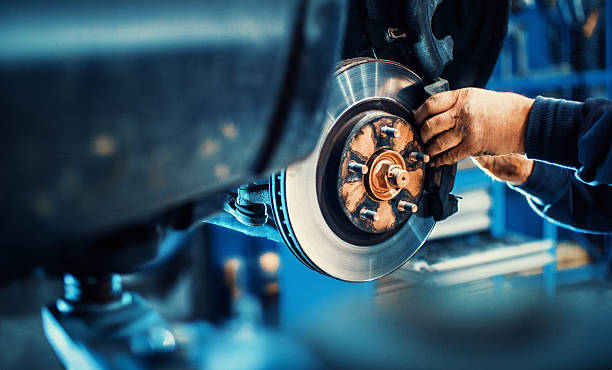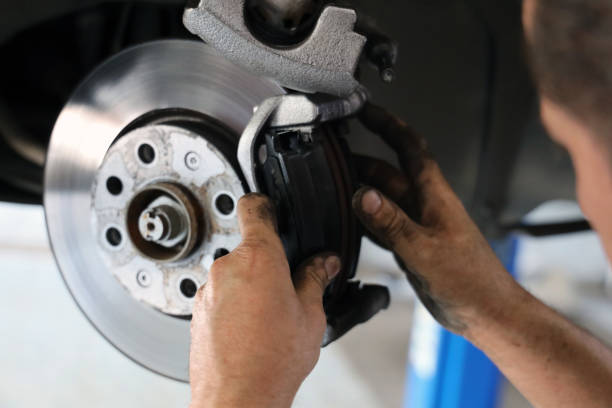
Braking systems are a critical component of vehicle safety and performance. Choosing the right type of brake pad can make a significant difference in stopping power, longevity, and overall driving experience. Two popular options for brake pads are semi-metallic and ceramic. This comprehensive comparison guide will explore the differences between semi-metallic and ceramic brake pads, their pros and cons, and help you make an informed decision on which type is best suited for your vehicle and driving needs.
Understanding Brake Pads
The Role of Brake Pads
Brake pads play a crucial role in your vehicle’s braking system. They create friction against the brake rotors when the brake calipers clamp down, converting kinetic energy into heat and bringing the vehicle to a stop. Over time, brake pads wear down and need to be replaced to maintain optimal braking performance.
Different Types of Brake Pads
There are several types of brake pads available on the market, each with its own unique composition and performance characteristics. The most common types include organic, semi-metallic, and ceramic brake pads. Organic brake pads, made from non-metallic fibers and resins, are becoming less common due to their relatively short lifespan and low heat resistance. In this article, we will focus on the differences between semi-metallic and ceramic brake pads.
Semi-Metallic Brake Pads
Composition and Characteristics
Semi-metallic brake pads are made from a mixture of metals and other materials, typically consisting of 30-65% metal. Common metals used in semi-metallic brake pads include steel, copper, and iron. These metallic materials are combined with other fillers, such as graphite or carbon, and a binding resin. Semi-metallic brake pads are known for their excellent heat dissipation, high friction coefficient, and durability.
Pros of Semi-Metallic Brake Pads
There are several advantages to using semi-metallic brake pads:
- Excellent heat dissipation: The metallic composition of semi-metallic brake pads allows them to dissipate heat more effectively than other types of brake pads. This helps maintain consistent braking performance, even under high-stress conditions, such as heavy towing or aggressive driving.
- High friction coefficient: Semi-metallic brake pads provide a high level of friction, resulting in strong stopping power.
- Durability: Semi-metallic brake pads are generally more durable and longer-lasting than organic brake pads.
- Cost-effective: Semi-metallic brake pads are often less expensive than ceramic brake pads, making them a more budget-friendly option.
Cons of Semi-Metallic Brake Pads
There are also some drawbacks to using semi-metallic brake pads:
- Noise: Semi-metallic brake pads can be noisier than ceramic brake pads, producing squeaking or squealing sounds during braking.
- Dust: The metal particles in semi-metallic brake pads can create more brake dust than ceramic brake pads, potentially leading to dirty wheels and increased wear on brake components.
- Reduced performance at low temperatures: Semi-metallic brake pads may not perform as well in cold conditions, requiring more time to warm up and achieve optimal friction.
Ceramic Brake Pads
Composition and Characteristics
Ceramic brake pads are made from a blend of ceramic fibers, fillers, and small amounts of metal, such as copper. This composition results in a brake pad that is quieter, cleaner and produces less heat than semi-metallic brake pads. Ceramic brake pads are known for their smooth, quiet operation, and low dust production.
Pros of Ceramic Brake Pads
Ceramic brake pads offer several advantages over semi-metallic brake pads:
- Quiet operation: Ceramic brake pads are generally quieter than semi-metallic brake pads, reducing brake noise and providing a more comfortable driving experience.
- Low dust production: Ceramic brake pads produce less brake dust compared to semi-metallic brake pads, helping to keep your wheels cleaner and reducing wear on brake components.
- Consistent performance across temperatures: Ceramic brake pads offer consistent braking performance in both cold and hot conditions, without the need to warm up like semi-metallic brake pads.
- Reduced wear on brake rotors: Ceramic brake pads are less abrasive than semi-metallic brake pads, resulting in less wear on brake rotors and potentially longer rotor life.
Cons of Ceramic Brake Pads
There are some downsides to using ceramic brake pads:
- Cost: Ceramic brake pads are typically more expensive than semi-metallic brake pads, making them a less budget-friendly option for some drivers.
- Heat dissipation: While ceramic brake pads produce less heat than semi-metallic brake pads, they also do not dissipate heat as effectively. This can potentially lead to brake fade under extreme conditions, such as racing or heavy towing.
- Reduced stopping power: Ceramic brake pads generally have a lower friction coefficient than semi-metallic brake pads, which may result in slightly reduced stopping power.
Choosing the Right Brake Pad for Your Vehicle

When deciding between semi-metallic and ceramic brake pads, it is essential to consider your vehicle’s specific requirements and your driving habits. Here are some factors to take into account:
- Vehicle type and weight: Heavier vehicles may benefit from the increased stopping power and heat dissipation provided by semi-metallic brake pads. Lighter vehicles, or those with smaller engines, may find that ceramic brake pads offer sufficient performance with the added benefits of quieter operation and less dust production
- Driving conditions: If you regularly drive in heavy traffic, engage in aggressive driving, or tow heavy loads, the heat dissipation and stopping power of semi-metallic brake pads might be more suitable for your needs. On the other hand, if you primarily drive in calm conditions or prioritize a quiet, clean driving experience, ceramic brake pads may be a better choice.
- Budget: Consider the cost difference between semi-metallic and ceramic brake pads. If you are on a tight budget, semi-metallic brake pads may be a more cost-effective option, while those willing to spend more for a quieter and cleaner braking experience may prefer ceramic brake pads.
- Manufacturer recommendations: Always consult your vehicle owner’s manual or consult with a professional mechanic for specific recommendations regarding brake pad types for your vehicle.
Conclusion
Both semi-metallic and ceramic brake pads have their unique advantages and disadvantages. Semi-metallic brake pads excel in heat dissipation and stopping power, making them suitable for heavier vehicles or those driven in demanding conditions. Ceramic brake pads offer quiet operation, low dust production, and consistent performance across temperatures, making them an attractive option for drivers who prioritize a comfortable and clean driving experience.
Ultimately, the best choice of brake pad for your vehicle depends on factors such as vehicle type, driving habits, and personal preferences. By understanding the differences between semi-metallic and ceramic brake pads and considering the factors discussed in this guide, you can make an informed decision that best suits your vehicle and driving needs. Always consult your vehicle owner’s manual or a professional mechanic for specific guidance on brake pad selection and maintenance.








